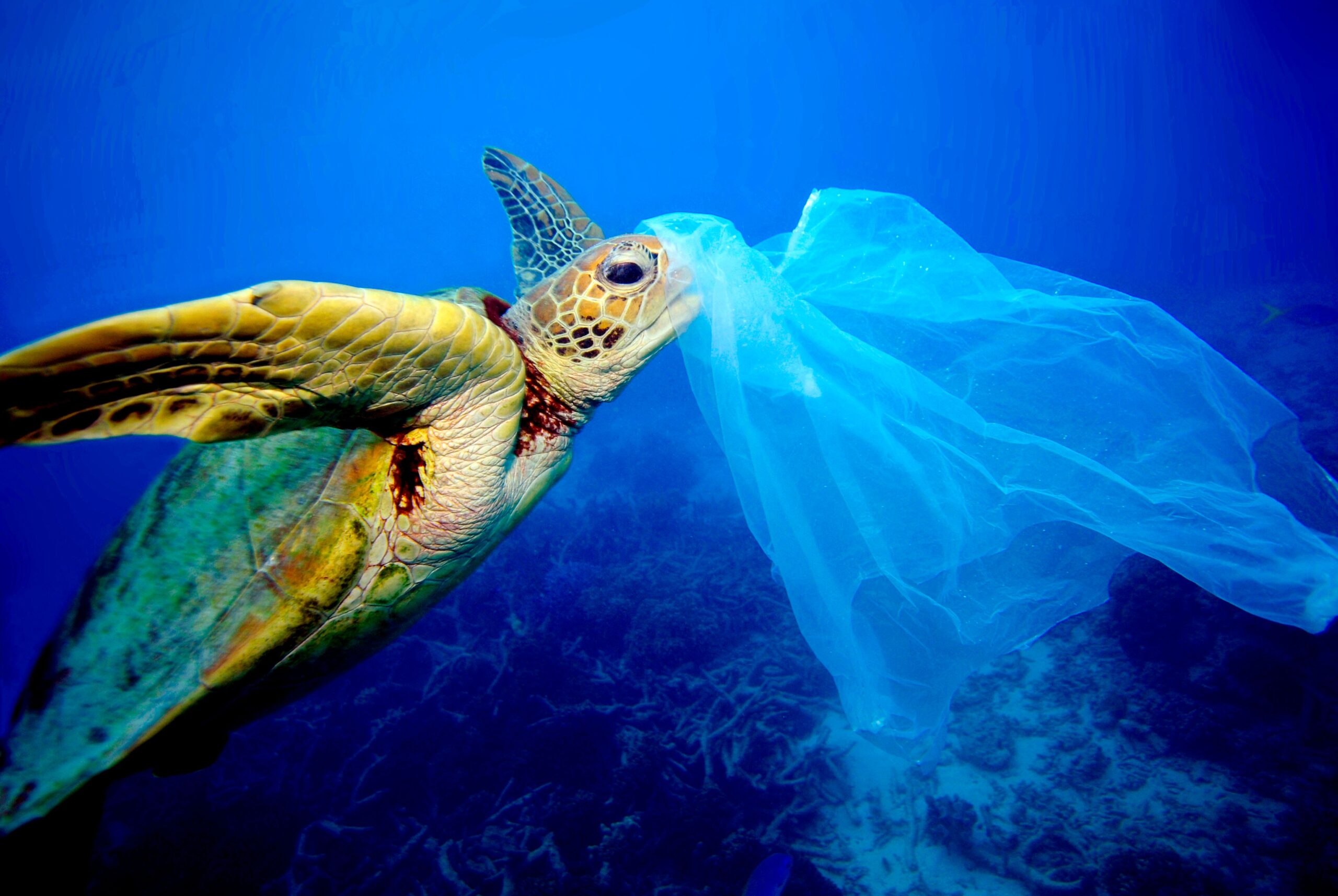Is It Possible to Forever Rid the World of Single-Use Plastic Bags?
Four takeaways from Ocean Conservancy’s engagement with the Beyond the Bag Initiative

In the spring of 2020, Ocean Conservancy joined Closed Loop Partners’ Beyond the Bag Initiative, a bold new effort bringing together some of the world’s biggest retailers to find alternative materials, models and technologies to replace the ubiquitous, predominantly fossil fuel-based single-use plastic bag.
Our job? To bring the ocean to the table, and help evaluate the potential environmental impacts of the more than 450 submissions they received from innovators the world over.
Of course, we were thrilled to participate. Single-use plastic bags are one of the most common, most insidious forms of ocean plastic pollution. They are consistently among the top 10 items found on beaches and waterways every year during Ocean Conservancy’s International Coastal Cleanup and are among the deadliest forms of marine debris to ocean animals like sea birds and turtles.
And while cleanups are a critical part of the solution, we need to work upstream to reduce and prevent plastic items from entering the environment in the first place. This is why Ocean Conservancy founded the Trash Free Seas Alliance (TFSA) in 2012—the first forum of its kind bringing together companies and conservation organizations to collaborate on solutions to ocean plastic pollution. (In fact, two TFSA members—CVS Health and Conservation International—are also a part of the Consortium to Reinvent the Retail Bag, which launched the Beyond the Bag Initiative, alongside Target, Walmart, Kroger, DICK’S, Dollar General, Albertsons Cos., Hy-Vee, Meijer, Walgreens and IDEO.)
Over the course of several months, our team reviewed dozens of shortlisted ideas across three buckets: innovative materials (which we’ll talk about below), reusable models (like reusable bag kiosks or shopping carts that fold neatly into cars) and enabling technologies (for example, adding microchips that autoload coupons to reusable shopping bags to incentivize shoppers to bring them to the store). Here are four takeaways from our Ocean Conservancy team as we reviewed potential solutions:
1. Every material has a trade-off.
Seaweed, algae, cassava, agricultural waste and even the exoskeletons of beetles… These were some of the more exotic materials proposed to replace fossil fuel-derived plastics. Other options included upcycled outerwear, old camping gear, various other plant-based options and more. In considering these materials, we had to acknowledge that there may be unintended consequences—and more questions than answers. We asked: Where will this material be sourced? How far will it need to be transported in light of emissions issues? Is it grown on land that would normally be used to grow food crops? If it’s grown in the ocean, what side effects might it have if grown at scale, on the broader marine ecosystem?
2. Nature (as usual) is a great source of inspiration for the circular economy.
The solutions that really thought about harmonizing with nature were some of the more fascinating ones. Could a “bag” be planted in the ground when it was no longer useful (ripped, for example) and bloom into flowers because it included seeds in its material makeup? Could a bag truly dissolve in water without leaching any harmful chemicals? Could carbon be sequestered by growing more seaweed or algae and then embedding it in a reusable bag? These nature-based solutions, while they often led to more questions, made it clear that it is possible to create a bag with fewer synthetic inputs.
3. End-of-life remains a critical question for all materials.
While the source of a material is of the utmost importance, we must also assess what’s likely to happen to it once it’s been used (“end-of-life”). Within the context of the Beyond the Bag Initiative, we were constantly asking ourselves: What is the likeliest end-of-life scenario for this material within our current (United States) waste system? And—given the far reach of the retail bag—do other countries have systems in place to manage this material? Many new materials rely on composting systems that do not exist at scale in the United States or elsewhere. Overall, this exercise highlighted that we must think about this issue holistically.
4. We need better labeling and clearer definitions around “green” buzz words.
Several submissions claimed their materials were 100% biodegradable, compostable, marine biodegradable, green, recyclable, eco-friendly, nature-based, etc. Some of these claims were verified through the evidence provided by the innovator because they are technical and some can even be certified through a third-party. However, some claims are simply that—claims or buzzwords. And more broadly, the average consumer does not (and probably should not be expected to) understand what each of these terms means. Labeling will be an important part of improving global waste systems in the future, so it’s important that the labels contain accurate information on sourcing and on the best end-of-life scenario for the environment. Ideally, a product is first reusable then repairable, then recyclable or compostable.
Now, the Consortium has chosen nine promising solutions to enter the next phase of the initiative: testing the viability of the designs to scale as long-term solutions. During this phase, the economic, environmental and social impacts of the winning solutions will be further explored and tested, with the Consortium working closely with winning solutions throughout 2021, supporting prototyping, mentoring and iterative developments toward piloting select solutions in-market.
It’s clear that one solution will not fit all, but we look forward to seeing where these nine innovations go, and whether they can contribute to reducing the number of plastic bags that end up in the ocean.
With this collaborative effort underway with many of the largest retailers in the United States, we are getting one step closer to the day when the fossil-fuel-based single-use plastic bag is no more.
With thanks to fellow Ocean Conservancy teammates for their thoughtful and dedicated input throughout the past several months: Chever Voltmer, Dr. Luis Estévez-Salmerón and Dr. Britta Baechler.